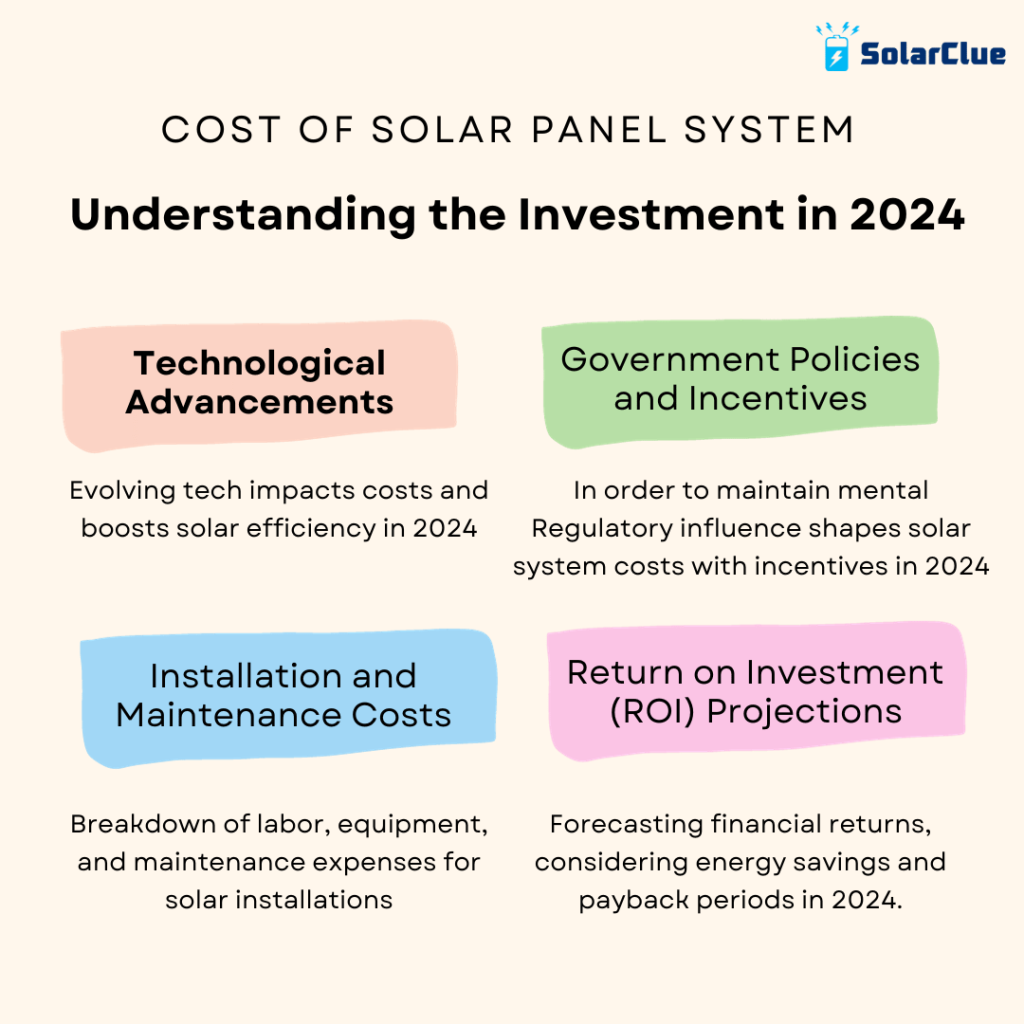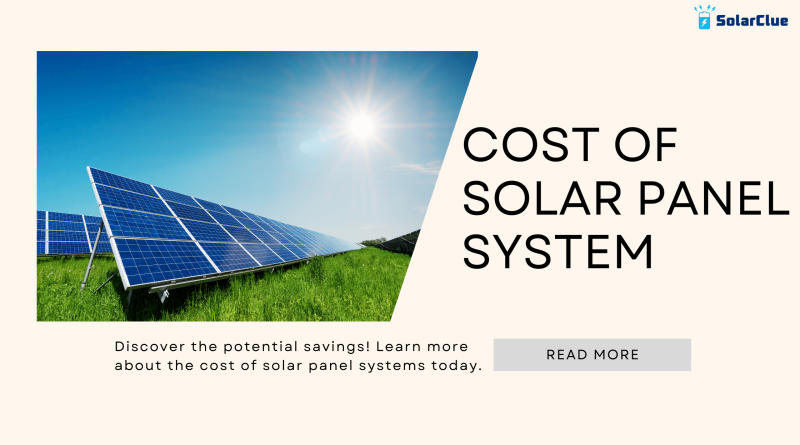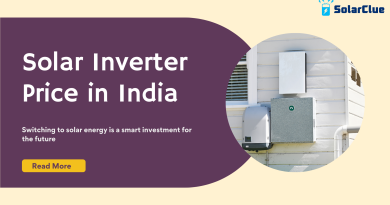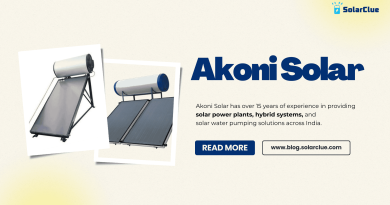How Much Would A Solar Panel System Cost?
Solar energy is an increasingly popular and sustainable alternative to traditional electricity sources. Additionally, with the rising awareness of the environmental benefits and cost savings associated with solar power, many individuals and businesses are considering installing a solar panel system. However, before making this decision, it is crucial to understand the costs involved. In this blog, we will discuss the factors influencing the price of a solar panel system, explore the various components of the system, and provide an estimate of how much you can expect to pay.
Table of Contents
Factors Influencing the Cost of Solar Panel System
Several key factors influence the cost of installing a solar panel system. Moreover, these include the size of the system, the quality of the panels and other components, the difficulty of installation, and the location of the property.
1. System Size
The size of the solar panel system is one of the most significant factors influencing the price. Larger systems generate more electricity, allowing you to reduce your dependence on the grid and potentially even sell surplus power back to your utility company. However, larger systems require more panels, which increase the overall cost of the system. On the other hand, smaller systems are less expensive upfront but may not meet all your electricity needs. It’s important to carefully assess your energy requirements and strike a balance between cost and capacity.
2. Panel Quality
The quality of the solar panels and other system components greatly impacts the price. High-quality panels generally have better efficiency and durability, resulting in greater energy production and longer lifespans. While these panels may come at a higher initial cost, they often yield greater long-term savings due to increased energy output and reduced maintenance expenses. It is advisable to invest in reputable brands and ensure that the panels meet industry standards and certifications for optimum performance.
3. Installation Complexity
The complexity of the installation process can also affect the overall cost. Roof-mounted systems are usually more straightforward and less expensive to install compared to ground-mounted systems. Roofs with simple configurations, such as pitched roofs, are generally easier to work with, reducing labor costs. However, if your roof requires reinforcement or has multiple angles, the installation process will be more complex and, consequently, more expensive. Factors like shading and obstructions might also impact the overall cost of installation.
4. Location
The geographical location of your property can influence the price of a solar panel system. This is due to variations in the amount of sunlight received throughout the year. Areas with high levels of solar radiation tend to require fewer panels to generate the same amount of electricity, reducing the upfront cost. Additionally, some regions offer government incentives, tax credits, or rebates for installing solar panels. These incentives can significantly reduce the overall cost of the system and make solar energy a more financially viable option.
Comprehensive Analysis of Solar Energy in 2024: Costs, Policies, Technology, and ROI Projections

1. Installation and Maintenance Costs:
Installation costs have generally been decreasing over the years due to advancements in technology and increased competition in the solar industry.
Maintenance costs for solar installations are typically lower compared to other forms of energy generation, but they depend on factors such as system size, location, and the type of technology used.
2. Government Policies and Incentives:
Government policies and incentives play a significant role in shaping the solar energy market. Moreover, many countries offer tax credits, rebates, and other financial incentives to encourage the adoption of solar power.
3. Regulatory Influence:
Regulatory frameworks can affect costs by introducing standards, permitting processes, and safety requirements. Changes in regulations can impact the overall cost structure of solar installations.
4. Breakdown of Labor, Equipment, and Maintenance Expenses:
Labor costs can vary based on location, skill level, and project complexity. Additionally, equipment costs include solar panels, inverters, mounting structures, and other components.
Maintenance expenses are usually lower compared to traditional power generation, mainly involving routine inspections and occasional repairs.
5. Technological Advancements:
Technological advancements often lead to increased efficiency and decreased costs. In 2024, it’s reasonable to expect improvements in solar panel efficiency, energy storage solutions, and overall system performance.
6. Return on Investment (ROI) Projections:
ROI projections depend on factors like energy production, system costs, and local energy prices. Generally, solar energy systems have a positive ROI over their lifespan, with payback periods getting shorter as technology improves.
7. Cost of Solar Panel System:
The cost of a solar panel system can vary widely based on factors such as system size, location, and the type of technology used. The cost per watt had been decreasing globally.
Components of a Solar Panel System
Now that we have explored the factors influencing the price of a solar panel system, let’s delve into the various components that make up such a system.
1. Solar Panels
Solar panels, also known as photovoltaic (PV) modules, are the primary component of a solar panel system. They convert sunlight into electricity using the photovoltaic effect. Additionally, the number and quality of panels you require depend on your energy needs and the available space for installation. It is essential to choose panels that provide a balance between cost, efficiency, and durability.
2. Inverter
The inverter is responsible for converting the direct current (DC) electricity generated by the solar panels into alternating current (AC) electricity that is usable in homes and businesses. Inverters come in various types, including string inverters, microinverters, and power optimizers. Moreover, the type of inverter you choose will impact system performance, efficiency, and cost.
3. Racking and Mounting System
Racking and mounting systems are used to securely attach the solar panels to the roof or ground. Moreover, these systems ensure proper alignment and spacing of the panels to maximize energy production. The cost of racking and mounting largely depends on the type of installation (roof or ground), the complexity of the structure, and the materials used.
4. Battery Storage (Optional)
While not essential, battery storage systems can be a valuable addition to a solar panel system. Batteries store the excess electricity generated during the day for use during nighttime or periods of low solar production. Arrays with battery storage offer greater self-consumption and energy independence. The cost of batteries varies based on capacity, brand, and chemistry.
Estimated Cost of a Solar Panel System
Now that we have discussed the factors influencing the price and the components of a solar panel system, you might be wondering how much it will cost to install one. The cost can vary significantly depending on the factors mentioned earlier, as well as other individual preferences and requirements. On average, a residential solar panel system of 1 kilowatts (kW) can range from ₹1,50,000 to ₹2,00,000 before considering any government incentives or rebates.
It is worth noting that the cost of solar panel systems has been continuously decreasing over the years, driven by advancements in technology, increased competition, and economies of scale. Furthermore, government incentives and tax credits can further reduce the cost and shorten the payback period.
Conclusion
Embark on a journey towards a brighter and more sustainable future with Solarclue®! Investing in a solar panel system is a smart and environmentally friendly decision. While the upfront cost may seem significant, the long-term savings in electricity bills and the positive impact on the environment make it a worthwhile investment. Discover a wide range of solar power systems from all leading brands at Solarclue®. Take the first step towards clean energy and substantial cost savings.
Visit Solarclue® now for expert guidance and a seamless transition to solar solutions. Power your world with reliability and innovation – choose Solarclue® for all your solar needs! Remember, by carefully considering the factors influencing the price and understanding the various components, you can make an informed decision that fits your needs and budget. Consult with reputable solar installers to obtain accurate quotes and explore available government incentives in your area. With solar power, you can harness the clean and renewable energy of the sun while contributing to a greener future.
The cost is influenced by factors like system size, location, technology advancements, installation, maintenance, government incentives, and regulatory influences.
On average, a residential solar panel system of 1 kilowatts (kW) can range from ₹1,50,000 to ₹2,00,000 before considering any government incentives or rebates.
Government policies impact costs by providing tax credits, rebates, and incentives to promote solar adoption and sustainability.
Labor costs vary by location and skill level, equipment costs include panels and inverters, and maintenance costs are generally lower compared to traditional power sources.
Technological advancements contribute to decreased costs and increased efficiency, driving positive changes in the solar industry.
ROI projections depend on factors such as energy production, system costs, and local energy prices, with positive returns expected over the system’s lifespan.
Individuals can make informed decisions by considering factors influencing prices, understanding components, consulting reputable installers, and exploring government incentives.
Indian solar panel prices in 2024 follow global trends, with factors like technology advancements and government incentives influencing the market.
Solar power harnesses clean and renewable energy, reducing dependence on fossil fuels and contributing to a sustainable and environmentally friendly future.
Optimizing cost savings involves choosing the right system size, understanding energy consumption patterns, and leveraging available government incentives for a more economical solar investment.



